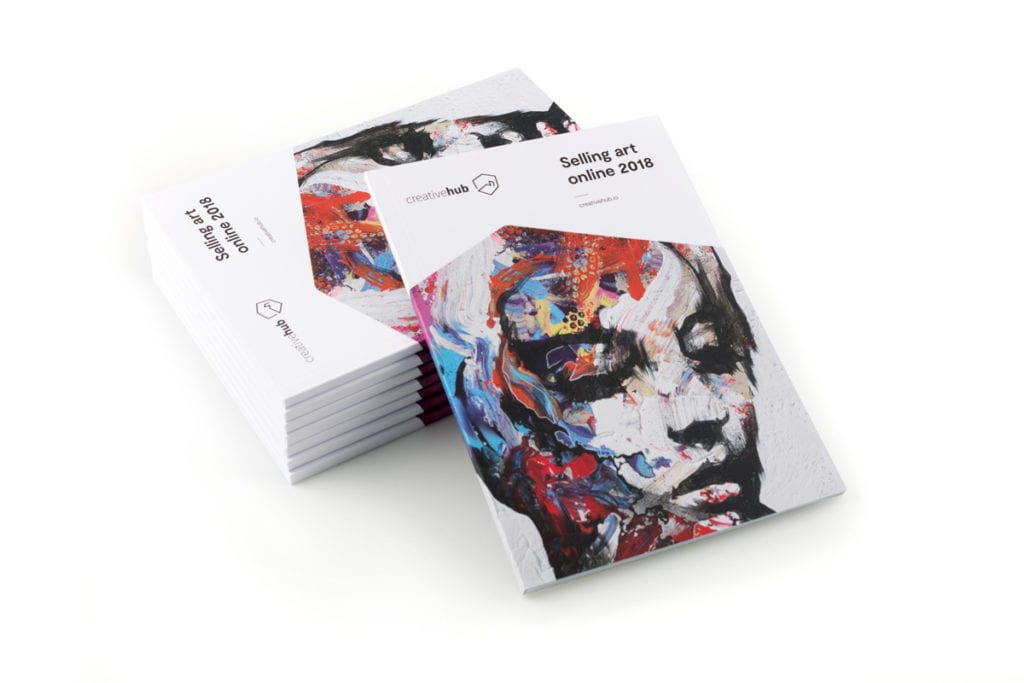You know what they say: plus ça change, plus c’est la même chose. It is hard to eschew the fact that the art market has always been in a state of flux. From the salons of the 19th century to the commercial galleries in the 20th and the internet as digital marketplace in the 21st; changes in how art is sold seems to be the only constant. This fluidity has historically and culturally played a crucial role in the expansion of the market as a whole. With an evolving art market, we’re not just bearing witness to changes in how art is sold but also in what is bought globally and the behaviour patterns of buyers. The Internet has allowed the formation of new communities bound by interests and causes rather than by location. Online art platforms put the power back into the hands of the consumer, empowering individuals to dictate the contemporary zeitgeist.
In line with its mission to empower and inspire artists across the world to successfully sell art online, Creativehub, a platform founded by theprintspace, has released Selling Art Online 2018 – an informative printed guide aimed at everyone from “individual artists, stores and galleries” to “art publications and arts organisations.” Taking the form of a palm-sized, 83-page manual, the guide includes contextual case studies and practical advice split into seven sections. Alongside this, it features in-depth interviews with the likes of photographer Carolina Mizrahi and aerial photographer Tommy Clarke. According to Creativehub, Selling Art Online 2018 covers “everything you need to help set up a successful online sales strategy.”
For those unfamiliar with its machinations, Creativehub is a clever amalgamation of eBay’s entrepreneurial ethos, Instagram’s gallery aesthetic and theprintspace’s printing and framing laboratory. It was founded in London in 2014 by Stuart Waplington, the managing director of Shoreditch-based printing company theprintspace, as a platform on which customers could sell what they were printing and framing. Waplington wanted to create a place where artists could securely store, order and sell work online. But, the cloud-based hub is designed to be more than just a store: it is also a global social network where users can find inspiration in the catalogue of prints and gain the recognition they deserve.
Waplington believes that now, more than ever, is the time for individuals to get to grips with selling art online. “Art remains amongst the most discretionary purchases, meaning that in the digital era it is perhaps more important than ever to acknowledge the reasons why people buy the art they do,” he explains. “People want to feel emotionally connected to the art they buy. With this in mind, the job of the artist or art seller is to foster ways to build their connection in order to ‘speak’ to their potential buyers.” This is echoed by Mizrahi, who comments: “If I was to buy art online I would need to contact the artist to have a more immediate connection and to understand everything is genuine. If I am going to spend £800 I need to know the behaviour, speed of response.”

While other creative industries such as fashion, music and film have been making use of digital commerce platforms for a while, art has only just reached its tipping point. Jo Davis, head of retail at the Barbican, considers that it is perhaps the reluctance to take risks in an unexplored market that can prevent galleries from switching to selling art online. As one of Creativehub’s clients, she observes that the “biggest challenge reaching the online art market was offering a print offer that was new and unique to our customers, but that posed little or no risk to us.” The threat of potential failure can be a major factor in preventing galleries from investing in a robust digital strategy. “We didn’t want to commit to expensive products or equipment when we had little idea of how they would perform,” she says.
Waplington goes on to highlight how this reluctance is now fading. “In recent years online art sales have seen an increasing spike in growth, suggesting that… the digital transformation in commerce is now firmly taking hold of the art market.” Comparing studies undertaken by Hiscox, the New York Times, Technavio and Widewalls, Creativehub found that average sales total around £32 billion globally each year, with the online part estimated at between £2.7bn to £3bn in 2016. Contrary to popular belief, this demonstrates that the art market is in fact bigger than the film and music industries. The endless possibilities that the Internet affords both emerging and established photographers and buyers, provides them with the opportunity to carve out the future of the digital visual marketplace.
Words: Alice Finney
Selling Art Online 2018 is available to order for free here.

–
This content is supported by theprintspace. theprintspace is the UK’s premier fine art printers and framers. They offer archival, museum quality printing and handmade bespoke framing. Click here to find out more.
Please click here for more information on sponsored content funding at British Journal of Photography.

